Hiking & Treking
Utah’s iconic national parks
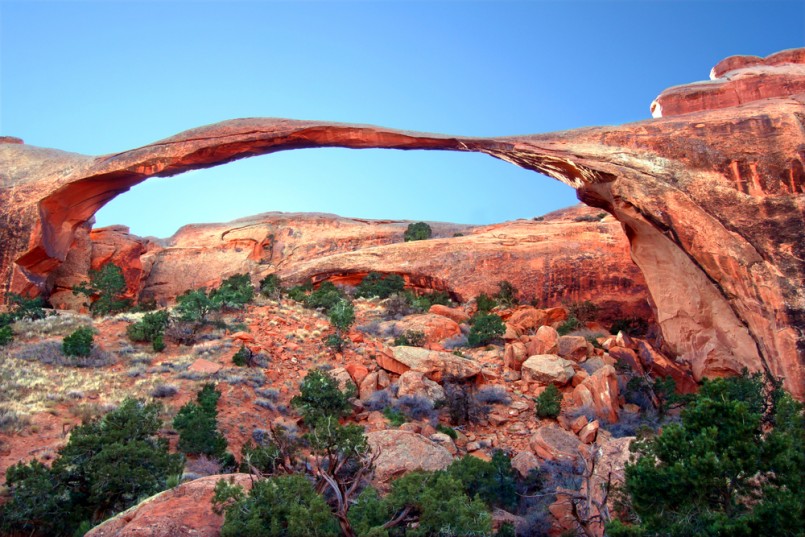
Image: Shutterstock/Jason Patrick Ross
Utah’s status as an outdoor mecca has slowly grown with time. The geography is diverse, with the southernmost reaches insanely and dramatically unbelievable. Fortunately for us, the National Park Service has allocated many of these special places as national parks for the population to responsibly enjoy. Whether you’re a tourist simply looking for a day trip, a serious backpacker, a mountain biker, or a rock climber, there’s something for you at one of Utah’s outstanding national parks. From Arches to Canyonlands to Zion to Capitol Reef, the national parks of Utah are unmissable.
Ready for a road trip through Utah this summer? Start your journey here!
Arches National Park
As one of the most recognizable parks in the entire country, Arches National Park is the embodiment of what makes Utah’s geology so enticing. Located just outside of Moab, Arches is easy to access and even easier to explore. The world-famous features, such as Delicate Arch, The Organ, Skyline Arch, Balanced Rock, and Landscape Arch, have left thousands of tourists begging the question: how is it real? The answer is simple, but incredibly hard to fathom. Around 200 million years ago, dense layers of Navajo and Entrada Sandstone were deposited throughout the region, creating the layered effect seen today in the arches. As rainwater seeped into the various cracks and crevices then eventually froze, thick chunks of sandstone were broken off. Harsh winds over millions of years molded the relatively smooth geological formations we see today within the park.
To discover Arches is an otherworldly experience, like something out of a sci-fi movie set on Mars. While backpacking is highly regulated and nearly impossible, day hikes throughout the park are abundant. From the visitor’s center it’s possible to access beginner, moderate, and expert trails, which allow excellent views of the many arches and features. There are fifty sites available at the Devil’s Garden Campground located within the park, giving overnight visitors an easier option to stay and explore. But if backpacking is a mandatory endeavor for you, don’t hesitate to inquire at the Arches Visitor Center. Permits can be obtained day-of only and hours before sunset. Whether you’re just visiting for the day or plan to rough it at night, always remember to pack-in water, wear sunscreen, bring layers, and tread lightly—let’s keep the beauty of Arches National Park alive and thriving for generations to come!
Zion National Park
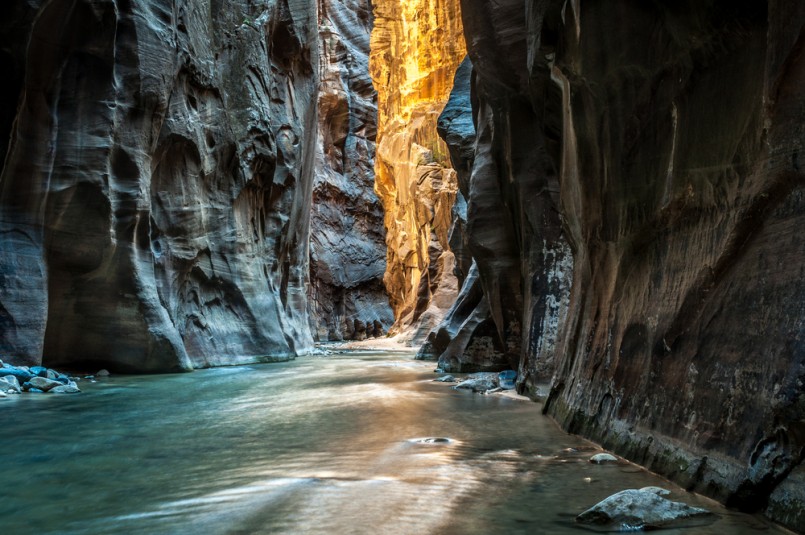
Image: Shutterstock/mattymeis
Zion is the dark horse of Utah’s National Parks. It’s small, remote, and less famous than big brother Arches, while providing an equally as exciting adventure. Located near Springdale in southwestern Utah, Zion National Park is gaining more and more attention each year. Rightfully so, as the park is unparalleled in high-desert geology, views, and bountiful backpacking trails. While you don’t necessarily need technical gear to see some of the best views in the park, exploring the region by foot is vehemently recommended. A few noteworthy features within Zion are Angels Landing, The Subway, and The Narrows, as well as rock climber favorite short walls like Spaceshot, Prodigal Son, and Touchstone.
Day hikes in Zion National Park are easy to do and don’t require a permit, but the bulk of the park can only be reached on multi-day trips. Luckily it’s easy to reserve a backcountry permit up to three months in advance of your trip through the National Park Service. Backcountry campsites are sprinkled throughout the park, which makes planning a trip exceptionally easy. Remember to book separate sites for each night of your hike, unless you plan to remain at the same site for multiple nights.
A few epic routes throughout the park are the West Rim Trail to the Grotto (14.2 miles), Chamberlain’s Ranch to the Temple of Sinawava (16 miles), and the Chinle Trailhead to Coalpits Wash (8.1 miles). If you’re dreaming of taking on one of these high-desert hikes, always come prepared. While there are a few water sources along the routes, it’s important to pack-in as much water as possible. Other cautions to consider are pop-up thunderstorms, flash floods, and exposure to the elements. The harsh, yet beautiful climate at Zion National Park is unforgiving, so enjoy it responsibly.
Bryce Canyon National Park
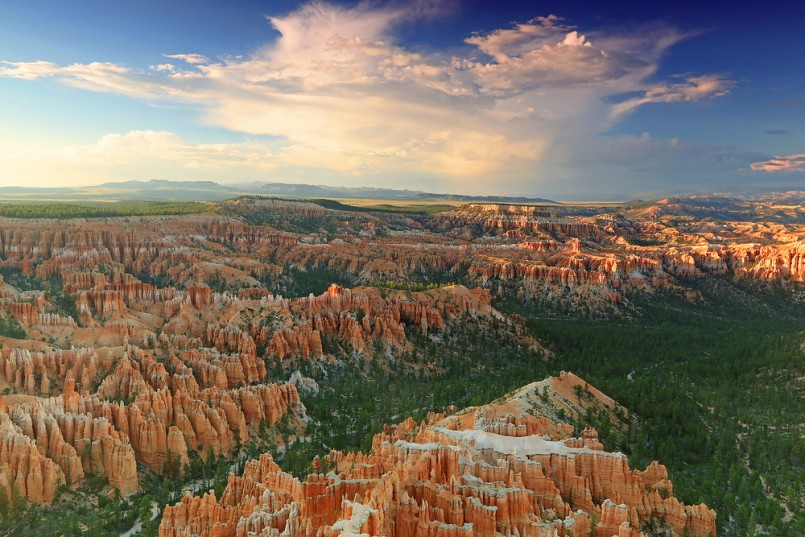
Image: Shutterstock/Johnny Adolphson
With the largest collection of element-eroded hoodoos in the entire world, Bryce Canyon National Park is equal parts mysterious and exciting. But first, let’s discover what a hoodoo is. Found on virtually every continent, a hoodoo is a large rock formation in the shape of a spindly pillar. At Bryce Canyon, the vibrant orange, red, and white towers mixed in with dense green forest create a breathtaking visual landscape that’s beyond photography. While the geology was indeed created through erosion, Bryce Canyon’s title of “canyon” is actually a misnomer. Without a central stream, which typically weathers down sediment over millions of years (think the Colorado River and the Grand Canyon), the term doesn’t actually apply here. Instead, Bryce Canyon was created through headward erosion, creating giant amphitheatres of eroded rock. The largest is Bryce Amphitheatre, stretching 12 miles long, 3 miles wide, and 800 feet deep.
While backpacking in Bryce Canyon is permitted, there are two designated campgrounds to choose from and plenty of day hikes to explore. Whether you homebase is from North or Sunset Campgrounds, it’s easy to access exceptional routes like Navajo Trail, Swamp Canyon, and Fairyland Loop. Backcountry permits can be acquired at the Visitor Center day-of (no advanced reservations are allowed) and give you the choice to camp at any of the twelve allotted backcountry sites along the Under-the-Rim Trail and Riggs Spring Loop Trail.
Canyonlands National Park
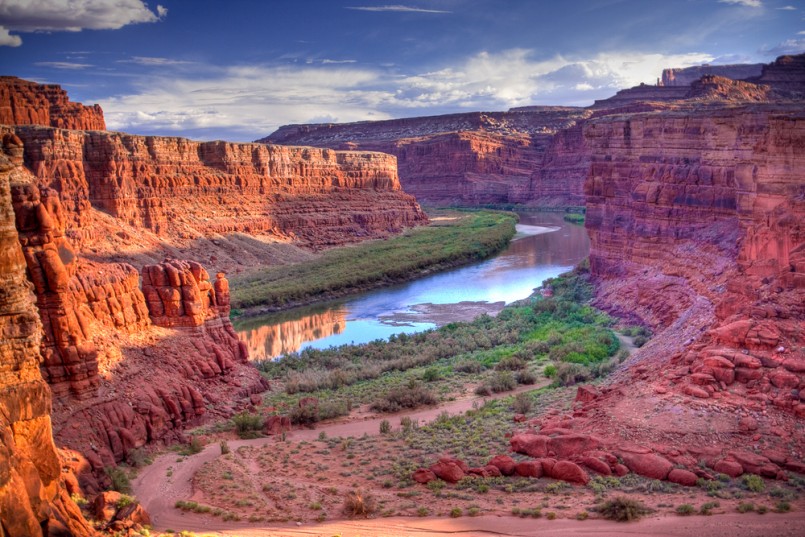
Image: Shutterstock/Scott Prokop
In the land of canyons, mesas, bluffs, and gorges, Canyonlands National Park contains countless colorful and inspiring vistas. Created by erosion of the Colorado and Green Rivers over millions of years, the geography at Canyonlands is indescribably moving. Separated into four distinct sections—Island in the Sky, the Needles, the Maze, and the Green and Colorado Rivers—Canyonlands is distinct and diverse. The arid desert climates of the Needles and Island in the Sky are excellent for mountain bikers, hikers, and backpackers, who spend countless hours exploring the terrain. The gorges cut by the Colorado and Green Rivers are breathtaking scenes of slowly eroded sandstone cliffs, cut away over time.
The rugged geography of Canyonlands creates the perfect escape for auto-touring enthusiasts. Four wheel drive is mandatory on most of the routes, so consider booking a tour with an outfitter if your car isn’t up to scruff. Backpacking through the Needles is the most popular activity within the park, but be sure to get a permit in advance on the National Park Service website, as desire for permits often exceeds number available. As with any backcountry exploration in the desert, it’s imperative to pay attention to weather before heading out on the trail.
Capitol Reef National Park
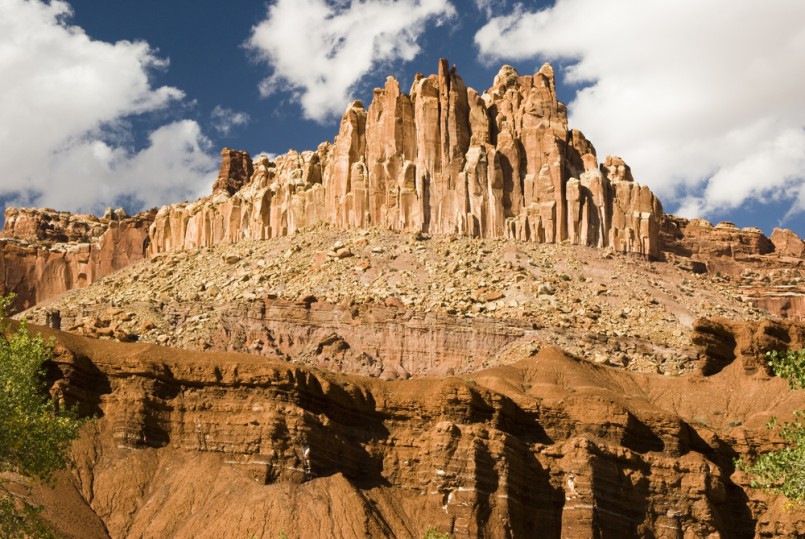
Image: Shutterstock/Jim Parkin
Find yourself deep within a giant fold in the Earth’s crust at Capitol Reef National Park. The 100 mile-long crevice, called the Waterpocket Fold (a geologic monocline), is filled with hidden treasures to discover. The red rocks extend in every direction, including features like cliffs, canyons, domes, bridges, and arches. Found near the small town of Terry, Utah, Capitol Reef National Park is consistently uncrowded and easy to explore, unlike most other parks in the state.
Another unique trait of Capitol Reef is its elaborate network of backcountry horseback riding trails that zig-zag throughout the park, allowing deeper exploration of the Waterpocket Fold. But don’t worry, you can simply backpack through the park if you don’t own a horse! Trails such as Capitol Gorge, Grand Wash, Cohab Canyon, and Cassidy Arch are excellent day-hike routes, with Goosenecks providing the most dramatic canyon views. Rock climbing is another favorite activity within Capitol Reef, Wingate being the most popular place to climb due to it’s hardened sandstone walls. Entrada is a great choice, too, but the sandstone is much softer. And the best part? You don’t need a permit to climb!

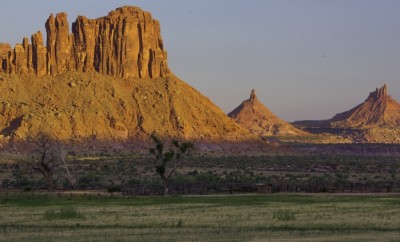

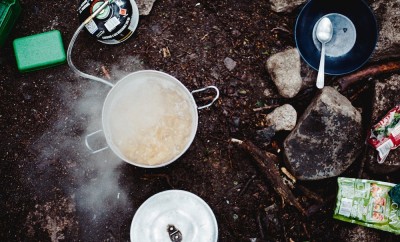

0 comments